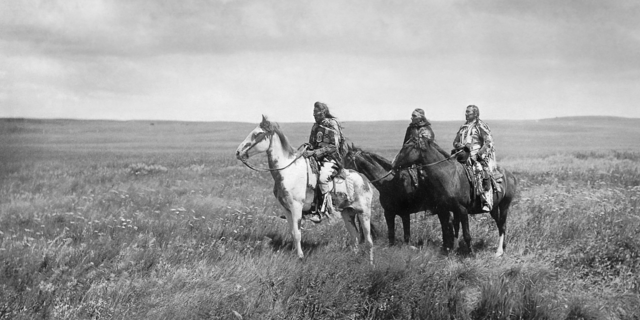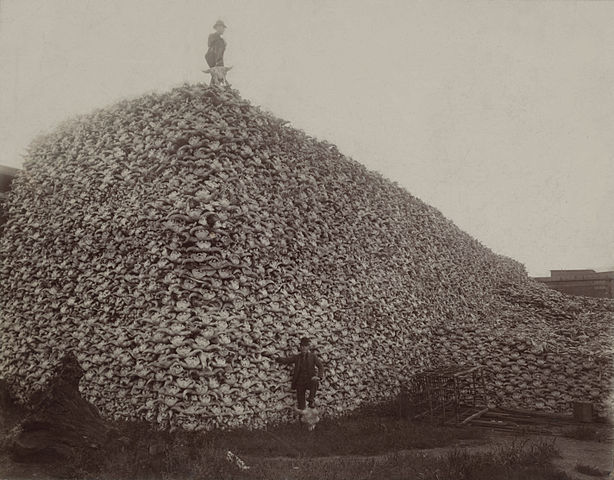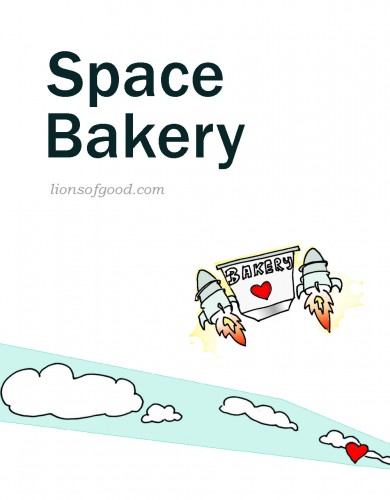
The Plains Indians had reverence for all living things, especially the bison.
The Native American Plains Indians believed that all things possessed spirits. And Earth was important, as she was the mother of all spirits. Among the animals, the bison were considered the most useful and valuable animal in their ecosystem.
At one time, millions of these great beasts roamed the American Plains. Awestruck witnesses reported seeing a sea of black during their annual migrations and feeling the ground trembling with the beat of millions of hooves.
Despite their vast population, the Plains Indians treated the bison with great respect and care. They killed only as many as needed, divided the animals evenly among one another.
The buffalo were free, we were free. Those were good years. Although the buffalo no longer cover these hills, we Indians still remember and practice a brotherhood with all living things. As Black Elk said “Once we were happy in our own country and we were seldom hungry. For the two leggeds and the four leggeds lived together like relatives.”
They relied on the bison for food, clothing and shelter. The flesh that was not eaten immediately was dried in the sun and sliced into jerky. Some of this was ground into a meal and stored for making soups. Buffalo skins were used for tipis and as blankets. The skins also made robes and moccasins, shields, snowshoes, and carrying bags called parfleches.
Boats were made by stretching a buffalo hide over bent willow branches. Sinew, from the long muscles from the backbone, served as sewing thread. Shorter tendons used for bow strings. Spoons were made from buffalo horns, and hooves were used to make glue. Nothing was wasted, every part of the buffalo was used. Even the buffalo’s skull was used in religious ceremonies as an altar — a reminder of the buffalo’s gift.

The tragic and wasteful massacre of bison.
It was in the 19th century that a series of events decimated the bison population. The railroad industry wanted them eliminated. They threatened railroad efficiency — damaging trains and tracks or causing severe delays. More powerful and accurate guns encouraged sport hunting. The bison were often shot from trains, leaving their carcasses to simply rot by the tracks.
Also, since the Plains Indians were often at war with the U.S., there were government initiatives to starve the Plains Indians by wiping out their main food source, the bison. There was indiscriminate slaughter… and unforgivable waste. By mid-1880s, the bison were reduced to a population of a few hundred… nearly hunted to extinction.
In business, many people foolishly think the only way to increase revenue is by getting more customers. If you think that, you’re about as barbaric and wasteful as the sport hunters who shot bison from trains.
That’s not to say that people are like bison. But if you appreciate how much the Plains Indians respected and valued each bison, you ought to consider how you’re serving your people, and ask yourself, “Am I doing everything I can with what I have? Or am I guilty of sinful waste?”
There are only 4 ways to grow your business — these are the hidden diamonds in your backyard. And all of them stem from this one question: “How else can you make their lives better?”
1. Attract more people (obviously…)
(… or is it?) This is what most people focus on, but it’s only the tip of the iceberg. It’s not enough to be a “Johnny one-note” with this as your only tune. Consider this: it takes a significant investment of time and money to take someone from a stranger to someone who trusts you and buys from you. So isn’t it a terrible waste to kick them away after you’ve finally warmed up to each other?
Instead of constantly attracting new people, start thinking, “How can you be more valuable to each person who walks through your door?” “How can you make each person more valuable to you?” What else do they need or desire? As the saying goes, “A bird in the hand is worth two in the bush.”
Stop getting distracted by one-time sales. Maximize Lifetime Value.
For example, you can attract more people by multiplying your existing people — when someone introduces or endorses you to someone else (who trusts him/her), it’s more powerful than anything you can say about yourself. One idea is to host “customer appreciation” events to reward existing people and invite their friends and family. Some of the guests may later become new people you serve.
Or, simply ask them. For example, remember your Cookie? You can use it to say: “Here’s a gift: two free copies of my _____ (your cookie). If you know a friend, neighbor or family member right now who is _____ and in need of _____, or if it ever comes up in conversation, please give them my ______ as a gift, and tell them: These are the guys we like and trust.”
If you provide a stellar service, not only will they want to tell their friends, they would also feel great for doing so, because they trust that you will take care of them and improve their lives too. Always ask: “How can I reach more people through my existing people?”
With these systems in place, you effectively transform every person who buys from you into a spring of more people.
2. Sell more often to your current people
Assuming you do a good job of making your people happy, the number one reason people will stop doing business with you is your indifference (or downright laziness). It’s either because you actually forgot about them, or made them feel like you forgot about them. You made them think you don’t care about them anymore, or you’re no longer in touch with their wants and needs.
Sometimes, your product may be one that is consumed and needs replacement (gasoline, diapers, razor blades, beer, ice cream) or you may have a service that provides a recurring benefit (cable/internet, electricity, haircut, personal training). In such cases, you may offer your people a more convenient or beneficial way to buy what they plan to consume in the future anyway.
For example, if you sell diapers and you know that moms will need a box of diapers a month, you may offer a monthly service to deliver a new box right to their doorstep. This saves moms the trouble of going out to buy them each time; and gives you the benefit of multiplying her lifetime value to your business (she won’t have to shop elsewhere) and securing a steady flow of demand and revenue.
As your people grow and transition from one point in their life to another, their needs and desires change. If you find out what else you can help your people with as they grow and change, you can offer it to them.
3. Increase the size of each transaction
The simplest way to increase revenue is by raising your prices. (Here are 19 reasons why you should.)
Next, it’s important to understand that people don’t randomly make purchases and they don’t buy in isolation. When someone buys something, it’s usually because something changed in their life or something triggered a specific want or need. Again, find out what else you can help your people with in their particular point in life, and offer it to them. Because whatever their reason was for buying one thing, that same reason can drive the need or desire for another thing.
(E.g., if someone is hungry, he may want a Big Kahuna burger. After deciding to buy a burger, he may also want some fries with that, and a tasty beverage to wash it down with.)
4. Reduce the number of people who stop using your products or services
Every person you lose costs you double: you lose business from an existing customer (who, by the way, you’ve worked hard to establish trust with and is more likely to come to you again after a good experience), and you have to spend more time and money to replace the one you lost.
Remember not to get so caught up with getting new people, that you neglect your existing ones. Just like any relationship, this needs care.
The diamonds in your own backyard are the people you serve. The sale is the start of a relationship, not the end of a transaction.
Isn’t it interesting? Your most important business asset— that can’t be captured in the accounting books —is your people and your relationship with them. Think about it: if your store is vaporized by a meteor but you keep your people… you can make an insurance claim, get a new place, tell your people where your new store is, and pop back on your feet as if nothing happened.
But if you lose your people… you’re back at zero.
And that’s why your #1 focus should be on building a neighborhood of hungry fans, happy people and raving advocates. Then nurture, invest in and fiercely protect your relationship with them.
Your people are your living media channel and broadcast station. They are your family and friends. They are your personal army.



Add your comment: